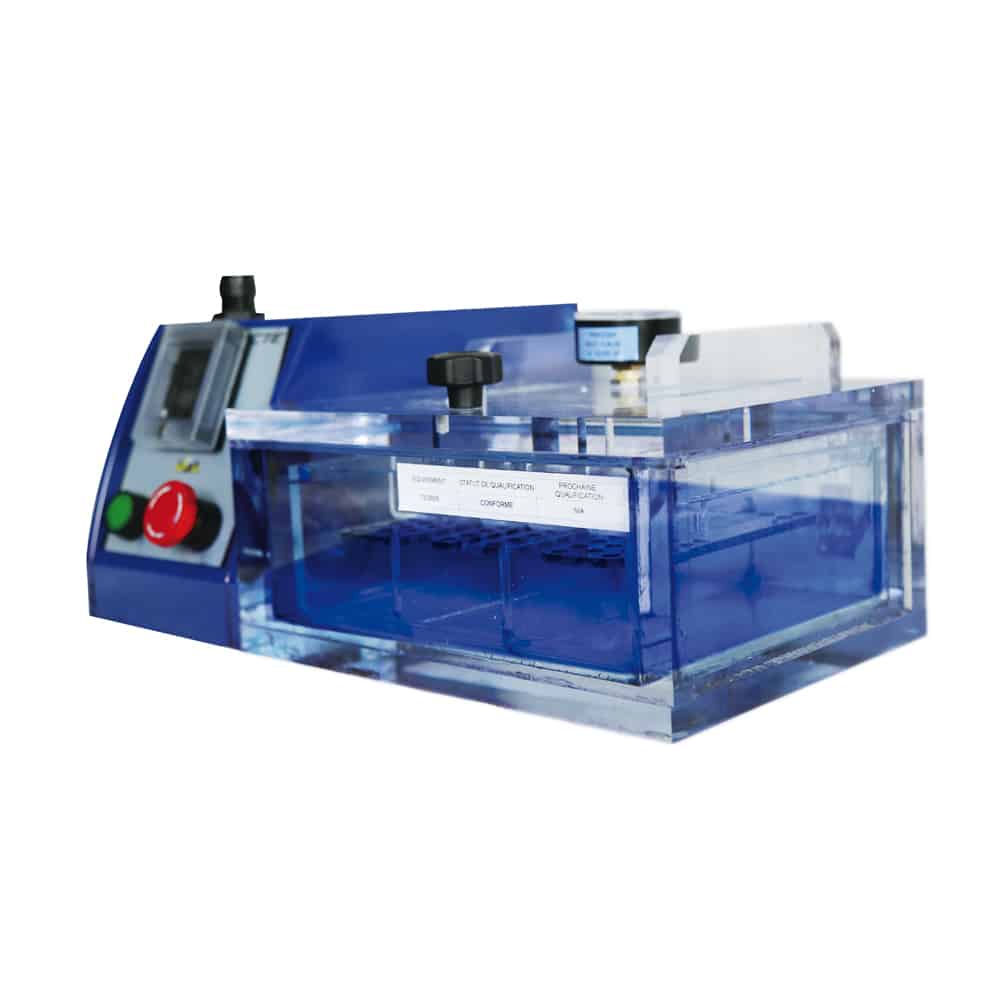CTE-Bi Leak test box
Pharmaceutical Leak Detector
Its allows to test, by depression, and thanks in particular to the migration of a tracer product called blue methylene, the sealing of blister-type samples or sleeves.
It is generally used in the pharmaceutical factory, sector in which the blister packaging is flagship.
Description
Benefits
- Fast, ergonomic and easy to use
- Visual
- Reliable and economical
- Adapted to the production envrionment / Robust
- Scalable product
- Test on receipt of raw materials, in production, before shipment
- Sample recovery using a drip tray removable
- Graduated ruler for good test repeatability
- Adapted for compliance with ASTM standards
- Specific arrangement
Technical information
| Box | Transparent PMMA chamber on hinge |
| Range of measurements and accuracy | From -0.1 to -0.85 Bar as standard. Accuracy + / -2 % Fully controlled by a microprocessor card |
| Useful dimensions | It depends on the size of box. |
| Reading the depression | Needle pressure gauge 50 mbar resolution |
| Units | Bar, Psi |
| Power supply | On compressed air 7 bar network connected to Rislan® 8mm pipe. Model CTS with pump up to -920 mbars (not included) |
| Weight | Depends box defined |
| Thickness | 20, 25 or 30 mm depending on the RDM study |
| Depression adjustment | Regulator with filter |
| Depression time | Adjustable time device from 0 to 999 s |
| Principle of the test | Visual |
| Temperature | From 0 to 40°C |
| Standards | IATA, ASTM D6653, ASTM D4991, ASTM D5094, ASTM D4169, EN 14401, DIN55528 (Part 1, 2, 3, 4, 5) |
Options
| Decrease in depression time (venturi more powerful) |
| Removable ergonomic drip tray |
| Adjustable time device from 0 to 99 999 seconds |
| Gas lift |
| Very Specific arrangement |
| Needle vacuum gauge with a better resolution |
Delivered with:
A calibration certificate LNE / COFRAC

